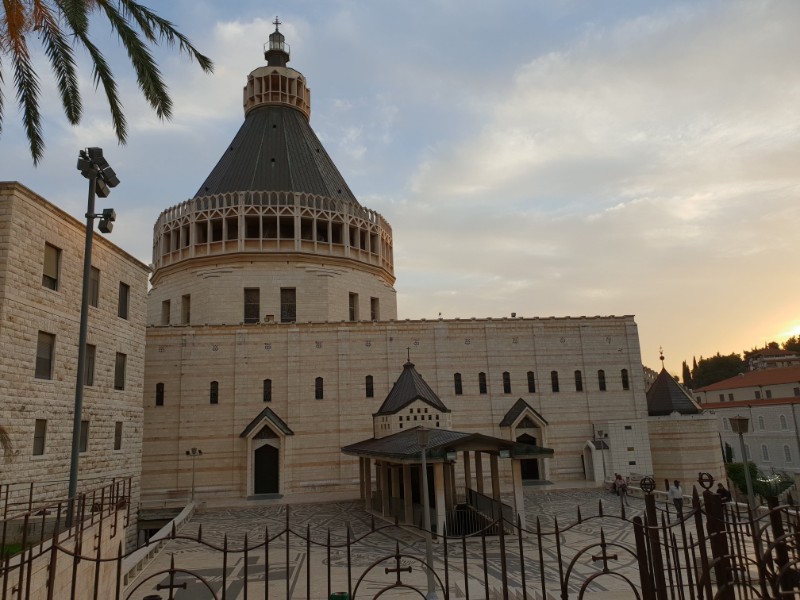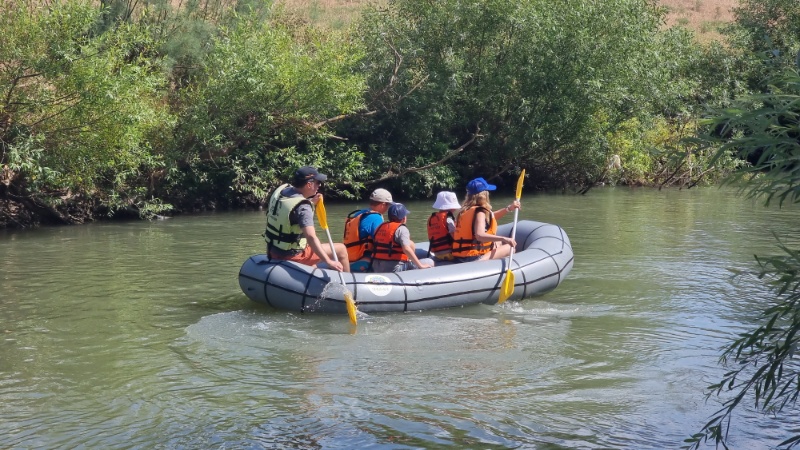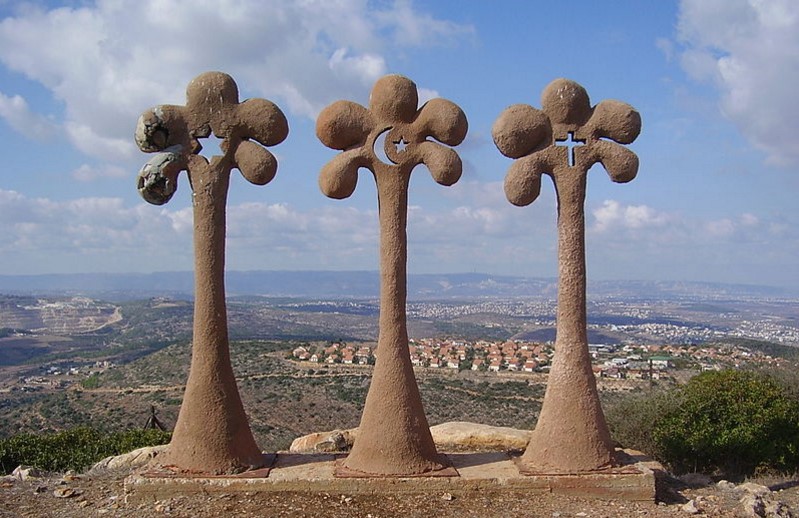12 MUST SEE attractions in Northern Israel
Discover the Beauty of Northern Israel
Explore Israel’s lush, diverse north — where green landscapes meet ancient history and cultural richness.
This region offers a stunning blend of nature, spirituality, and tradition — a refreshing contrast to the desert south and bustling urban center.
From the rolling hills of the Galilee to the rugged cliffs of the Golan Heights, northern Israel is a haven for hikers, history lovers, and spiritual seekers. Ancient cities like Safed and Tiberias invite you to wander through mystical alleyways, explore sacred sites, and connect with centuries of Jewish heritage. Nearby, the Sea of Galilee offers peaceful shores, historical landmarks, and Christian pilgrimage sites that draw visitors from around the world.
Scattered throughout the region are charming Druze villages, scenic lookouts, boutique wineries, and lush nature reserves with cascading waterfalls and forested trails. Whether you’re walking through a biblical landscape, floating in a hot spring, or savoring local flavors in a countryside café, Northern Israel invites you to slow down and take it all in.
Here are 12 must-see attractions that showcase the charm and diversity of Northern Israel — destinations that should be on every traveler’s radar.
✈️Planning a Trip to Israel? We’re Here to Help!
Whether it’s a family vacation, or day tour – we’ll make it unforgettable.
Get in touch today — your journey starts here.

1. Acre (Akko)

Acre, or Akko, is a living museum — an ancient port city that has witnessed the rise and fall of empires for thousands of years. Once home to Phoenicians, Greeks, Crusaders, Ottomans, and more, Acre’s story is written in its stones, arches, and alleyways. Designated a UNESCO World Heritage Site, the city’s Old City is enclosed by towering walls and filled with a maze of narrow streets, colorful markets, and secret courtyards that feel frozen in time.
Visitors can journey through Crusader Halls hidden beneath the city, walk the Templar Tunnel, or marvel at the intricate architecture of the Al-Jazzar Mosque, one of the most impressive in Israel. The Turkish Bazaar buzzes with spices, ceramics, and textiles, while the lively port still serves fishermen and offers scenic views.
Acre’s rich blend of history, faith, and coastal beauty makes it a place where every turn offers a new story. It’s a destination that engages all the senses and connects travelers to the many layers of Israel’s past.
2. Nazareth

Nazareth is a city deeply rooted in Christian tradition, known around the world as the hometown of Jesus of Nazareth. But beyond its spiritual significance, it’s also a vibrant and welcoming Arab city with a unique blend of old and new, sacred and everyday.
At its heart lies the stunning Basilica of the Annunciation, one of the most important churches in the Christian world, believed to stand on the site where the Angel Gabriel told Mary she would give birth to Jesus. A short walk away are other important landmarks like the Church of St. Joseph, thought to be the site of Joseph’s workshop, and the Nazareth Village, which recreates first-century Galilean life with incredible authenticity.
Wander through the Old Market, where spices fill the air and vendors sell everything from fresh pita to handwoven fabrics. The city’s culinary scene is also a treat — don’t miss a chance to sample traditional Arabic sweets or famous hummus joints.
Nazareth offers a rich experience that blends pilgrimage, hospitality, and Middle Eastern flavor in a city that is both deeply historic and full of life.
3. Sea of Galilee

The Sea of Galilee, also known as Lake Kinneret, is more than a body of water — it’s a spiritual and historical heartland. Surrounded by green hills, palm trees, and ancient ruins, the lake is a peaceful yet powerful place that has drawn visitors, pilgrims, and dreamers for millennia.
Christian tradition holds that Jesus performed many miracles here — walking on water, calming the storm, and feeding thousands. As such, its shoreline is dotted with important sites like Capernaum, Tabgha, and the Mount of Beatitudes. Each place invites reflection and wonder, making the area one of the most meaningful pilgrimage destinations in the world.
Beyond its biblical connections, the Sea of Galilee is also a beloved recreational spot. Locals and tourists alike enjoy boating, kayaking, fishing, and swimming, while nearby hotels and beaches provide perfect places to relax. The town of Tiberias adds a modern touch with restaurants, promenades, and thermal spas.
Whether you come for history, faith, or just the serene beauty of the landscape, the Sea of Galilee never fails to leave a lasting impression.
4. Capernaum

Capernaum, known as “the town of Jesus,” is an extraordinary archaeological treasure on the northern shore of the Sea of Galilee. This quiet site, surrounded by palms and overlooking the water, offers an intimate glimpse into life during the time of the New Testament.
The ruins include a large 4th-century synagogue built with stunning white limestone, believed to stand above the original synagogue where Jesus once taught. Just steps away is a modern church built over what is traditionally known as the house of St. Peter. Its glass floor allows visitors to view the ruins below, preserving a sacred link to the early Christian community.
Capernaum’s peaceful setting and spiritual significance make it a powerful stop on any tour of the Galilee. Here, amidst crumbling stone walls and ancient olive trees, visitors can connect to the past in a place where scripture and archaeology meet.
5. Safed (Tzfat)

Safed (or Tzfat) is a city of spiritual elevation, artistic energy, and breathtaking views, perched high in the mountains of the Upper Galilee. Known as one of the four holy cities of Judaism, it became a center of Kabbalah — Jewish mysticism — in the 16th century and continues to exude a mystical charm.
The city’s Old City is a maze of blue-painted walls, cobbled stone paths, and ancient synagogues, each with its own rich history and spiritual symbolism. The Ari Ashkenazi Synagogue and the Abuhav Synagogue are particularly notable for their beauty and historical depth. Safed is also famous for its Artists’ Colony, where painters, sculptors, and craftspeople display their work in studios and galleries tucked into centuries-old buildings.
From musical performances to candle-making workshops and mountaintop sunsets, Safed offers both the soul-searching pilgrim and the casual traveler a unique and meaningful experience. It’s a city that invites you to slow down, reflect, and discover inspiration around every corner.
6. Rosh Hanikra

At Israel’s northernmost Mediterranean tip, Rosh Hanikra offers one of the most spectacular natural wonders in the country. Here, where white cliffs plunge into turquoise waves, the sea has carved a network of grottoes and caves that shimmer with light and echo with the power of the ocean.
Visitors descend via one of the world’s steepest cable cars to reach the grottoes, where they can walk through naturally carved tunnels and watch the waves crash against the limestone. The sound, the color, and the cool breeze create an immersive sensory experience. Nearby, a historic British train tunnel offers a glimpse into the area’s past, once serving as a vital connection between Israel and Lebanon.
Rosh Hanikra is not just about nature — it’s about contrast: sea and stone, past and present, serenity and awe. It’s a favorite spot for photographers, couples, families, and anyone who wants to stand at the edge of Israel and witness something truly magical.
7. Mount Tabor

Mount Tabor rises dramatically from the Jezreel Valley and is instantly recognizable by its symmetrical dome shape. Revered in Christian tradition as the site of the Transfiguration of Jesus, it holds deep religious significance and breathtaking panoramic views from its summit.
At the top, the Church of the Transfiguration, built by Antonio Barluzzi in the 20th century, blends Romanesque beauty with a sense of peace. The church stands on the ruins of earlier Byzantine and Crusader structures, reflecting the mountain’s enduring spiritual legacy. Inside, intricate mosaics and quiet chapels invite visitors into a space of prayer and contemplation.
Pilgrims and nature lovers alike make the winding drive or hike to the summit, passing through forests of oak and pine that cloak the mountain in lush greenery. At the top, you’re rewarded with a stunning 360-degree vista that stretches across the Galilee, including views of the Jordan Valley and even Mount Hermon on clear days. Whether for spiritual reflection or scenic inspiration, Mount Tabor is a timeless landmark in the heart of northern Israel.
8. The Northern Road

Traveling along Israel’s northern roadways, especially Route 899 or Route 98, is an adventure in itself — a scenic drive that winds through mountains, fields, forests, and frontier landscapes. It’s a journey through nature, history, and the quieter corners of Israeli life.
This route threads through remote kibbutzim, ancient ruins, and borderland viewpoints that offer both natural beauty and thought-provoking perspectives. You’ll pass through sleepy villages, Druze and Maronite communities, nature reserves like Bar’am and Nahal Kziv, and discover off-the-beaten-path gems like Metula’s Canada Centre, Mount Adir, and Dishon Gorge.
The Northern Road offers glimpses into the geopolitics of the region, especially as you drive along the Lebanese border, where you’ll spot UN outposts and old bunkers now surrounded by wildflowers. It’s a landscape shaped by history and resilience, but also full of peace, agriculture, and open skies.
Whether you’re traveling from the Mediterranean to the Golan or making a slow loop through the Upper Galilee, this road invites discovery around every bend.
9. The Golan Heights

The Golan Heights is one of Israel’s most awe-inspiring regions — a high plateau of wide-open landscapes, basalt cliffs, waterfalls, and ancient sites. Captured from Syria in 1967, this region is rich in history, agriculture, natural beauty, and quiet resilience.
Nature lovers can hike through the Banias Nature Reserve, which features a powerful waterfall, lush river trails, and archaeological remains from Roman and Crusader times. Adventurers might head to Mount Hermon in winter for skiing and snowboarding, or enjoy scenic drives and spring wildflowers across volcanic rock fields in warmer months.
Wine enthusiasts can sample award-winning vintages at Golan Heights Winery or smaller boutique producers in the region. Towns like Katzrin reveal ancient Jewish villages and a thriving modern community. Military history buffs can visit Mount Bental, where an old IDF outpost offers stunning views and a sobering look at Israel’s strategic borders.
Whether you’re hiking, soaking in a hot spring, or enjoying a meal with mountain views, the Golan Heights offers a sense of space, freedom, and connection to the land that few other places can match.
10. Ghajar Village

Ghajar is a small and extraordinary village in the far north of Israel, perched at the convergence of Israel, Lebanon, and Syria. This quiet town of Alawite Muslims has lived through shifting borders, conflict, and an ongoing identity struggle that makes it one of Israel’s most politically unique communities.
Originally Syrian in governance, Ghajar became part of Israeli territory after the Six-Day War, but its location — partly in Lebanon and partly in Israel — means it remains a security-sensitive and rarely visited area. Because of its geopolitical complexity, access is limited, and tourism is often restricted.
Yet those who study or glimpse Ghajar from the outside discover a fascinating portrait of loyalty, tradition, and survival in a landscape of uncertainty. The nearby Hasbani River and mountain ridges add pastoral beauty to a village shaped by history’s heavy hand.
Ghajar stands as a symbol of the many layers — cultural, religious, political — that define Israel’s northern frontier.
11. Rafting in the Jordan River

For a refreshing and family-friendly adventure in northern Israel, rafting the Jordan River offers a fun and scenic way to experience the region’s natural beauty. Especially in the summer and fall, the upper Jordan near Kfar Blum, Beit Hillel, and Hagoshrim is perfect for a cool and memorable outing.
Rafting here isn’t extreme white-water — it’s a peaceful float with a few splashes, winding through lush riverbanks, quiet stretches, and shaded groves. You’ll paddle past eucalyptus trees, drift under wooden bridges, and may even spot birds and turtles along the way.
Outfitters provide inflatable boats, kayaks, and life jackets, making the experience safe for all ages. Many rafting sites also offer extras like zip-lines, climbing walls, picnic areas, and cafés, making it a perfect half-day activity for families, couples, and groups.
Rafting the Jordan River isn’t just about getting wet — it’s about immersing yourself in the rhythms of nature and enjoying a lighthearted, outdoorsy break from the road.
12. Druze and Minority Villages

Northern Israel is home to a diverse patchwork of Druze, Circassian, Bedouin, and other minority communities that preserve unique cultural traditions and foster coexistence within the fabric of Israeli society. Visiting these villages opens a window into a world often unseen by mainstream tourism.
In villages like Daliyat al-Carmel and Isfiya on Mount Carmel, you can enjoy hearty Druze hospitality, home-cooked meals, and lively open-air markets filled with colorful textiles and spices. In the Golan Heights, Majdal Shams is a striking blend of tradition and modernity, known for its apple orchards, snowy winters, and deep-rooted Syrian identity. Rehaniya, a Circassian village in the Upper Galilee, offers cultural centers and dance performances that celebrate their North Caucasus heritage.
What unites these communities is a strong connection to land, family, and heritage. Tours often include local guides, storytelling sessions, culinary tastings, and conversations about religion, identity, and service in the Israeli army.
These villages remind us that Israel’s strength lies not just in its diversity of landscapes — but in the rich mosaic of people who call it home.
